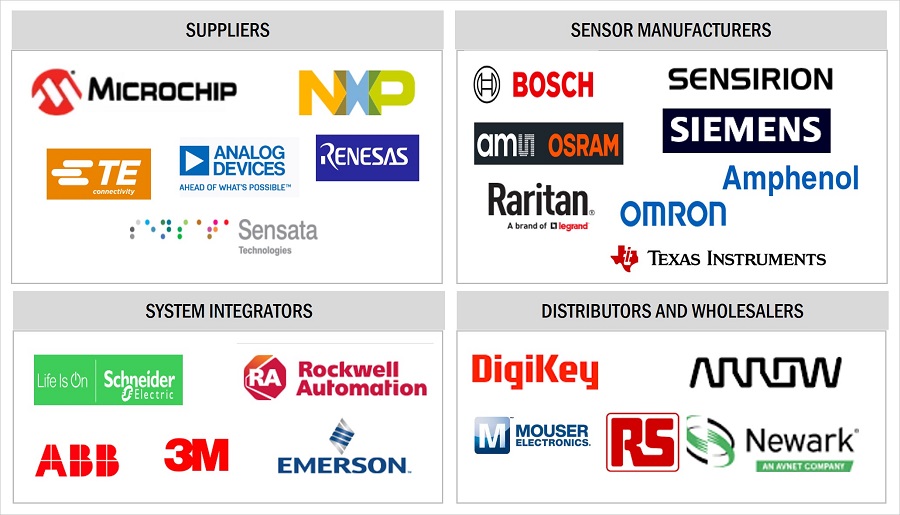The Environmental Sensor Market has witnessed significant growth in recent years, driven by the increasing awareness about environmental pollution, climate change, and the need for sustainable development. Environmental sensors play a crucial role in monitoring air quality, water pollution, and other environmental parameters, enabling governments, industries, and communities to take proactive measures to protect the environment and human health. In this article, we delve into the dynamics of the Environmental Sensor Market, exploring its size, share, and emerging trends that are shaping the future of environmental monitoring.
Download PDF Brochure:
https://www.marketsandmarkets.com/pdfdownloadNew.asp?id=36880440
Understanding Market Size and Share: The Environmental Sensor Market has experienced substantial expansion, with the market size valued at USD 1.8 billion in 2023. According to industry estimates, the market is projected to reach USD 3.0 billion by 2028, registering a robust compound annual growth rate (CAGR) of 11.0% during the forecast period. This significant growth can be attributed to the increasing adoption of environmental sensors across various industries, stringent environmental regulations, and growing concerns about pollution and climate change worldwide.
Key Trends Driving Market Growth: Several key trends are driving the growth of the Environmental Sensor Market, reshaping the landscape and driving innovation in environmental monitoring:
- Rising Demand for Air Quality Monitoring: With the worsening air quality in urban areas and the increasing prevalence of respiratory diseases, there is a growing demand for air quality monitoring solutions. Environmental sensors equipped with particulate matter (PM), volatile organic compounds (VOCs), and nitrogen dioxide (NO2) sensors are being deployed in cities, industrial areas, and residential neighborhoods to monitor air pollution levels in real-time. These sensors provide valuable data for policymakers, urban planners, and healthcare professionals to implement effective pollution control measures and protect public health.
- Expansion of Water Quality Monitoring: Water pollution is a significant environmental challenge, affecting ecosystems, human health, and economic development. Environmental sensors equipped with pH, turbidity, dissolved oxygen, and chemical sensors are being used to monitor water quality in rivers, lakes, oceans, and groundwater sources. These sensors enable early detection of contaminants, algae blooms, and other pollutants, facilitating timely intervention and remediation efforts to safeguard water resources and aquatic ecosystems.
- Adoption of IoT-enabled Sensor Networks: The Internet of Things (IoT) has revolutionized environmental monitoring by enabling the deployment of interconnected sensor networks for real-time data collection and analysis. IoT-enabled environmental sensors can communicate wirelessly, transmit data to centralized platforms, and provide actionable insights into environmental conditions. These sensor networks are being deployed in smart cities, industrial facilities, agricultural fields, and natural reserves to monitor environmental parameters, optimize resource management, and support sustainable development initiatives.
- Integration of Artificial Intelligence (AI) and Machine Learning (ML): Advancements in AI and ML technologies are enhancing the capabilities of environmental sensors by enabling predictive analytics, anomaly detection, and pattern recognition. AI algorithms analyze large volumes of sensor data, identify trends, and predict future environmental conditions with high accuracy. By leveraging AI-powered environmental sensors, organizations can optimize resource allocation, anticipate environmental risks, and make informed decisions to mitigate the impact of climate change and environmental degradation.
The Environmental Sensor Market is experiencing rapid growth, driven by the increasing need for real-time environmental monitoring, regulatory compliance, and sustainability initiatives. As environmental concerns continue to escalate, the demand for advanced sensor technologies is expected to surge, driving innovation and investment in the environmental monitoring industry. By embracing key trends such as air quality monitoring, water quality monitoring, IoT-enabled sensor networks, and AI integration, stakeholders can harness the power of environmental sensors to protect the planet, promote public health, and create a more sustainable future for generations to come.
Ask for Sample Report:
https://www.marketsandmarkets.com/requestsampleNew.asp?id=36880440
Market Dynamics:
Opportunities: Need to monitor water pollution in industrial and residential sectors
There has been a significant increase in the demand for environmental sensors due to the need to monitor water pollution in various settings, such as industrial facilities, residential areas, and natural water bodies. This demand is a result of the alarming increase in water pollution levels globally, which requires strict regulations and monitoring measures. According to statistics from the Natural Resources Defense Council in 2022, approximately 70% of river and lake pollution is caused by industrial discharges, making effective monitoring solutions urgent. Additionally, according to the Food and Agriculture Organization in Italy, 80% of municipal wastewater is discharged into water bodies untreated, and industries dump millions of tonnes of heavy metals, solvents, toxic sludge, and other wastes into water bodies each year. Real-time water quality monitoring has become essential for public health due to the rise in population and urbanization, which has increased pollution in residential areas.
Challenge: Complexities associated with installation and maintenance in remote and harsh environments
Maintaining environmental sensors in remote or harsh environments can be a difficult task, as it involves dealing with various challenges such as limited accessibility, extreme weather conditions, potential equipment damage, and power supply concerns. These factors can make it hard to collect accurate data in a timely manner. Inadequate infrastructure and transportation can limit accessibility to the sensors, which can hinder prompt maintenance. Weather conditions, such as extreme temperatures and corrosive elements, can cause significant wear and tear to sensors located in deserts or polar regions.
Key Market Players
Major vendors in the environmental sensor companies include Honeywell International Inc. (US), Sensirion AG (Switzerland), Siemens (Germany), ams-OSRAM AG (Austria), Bosch Sensortec GmbH (Germany), OMRON Corporation (Japan), Raritan Inc. (US), Texas Instruments Incorporated (US), Schneider Electric (France), and Amphenol Corporation (US).
Environmental Sensor Ecosystem

